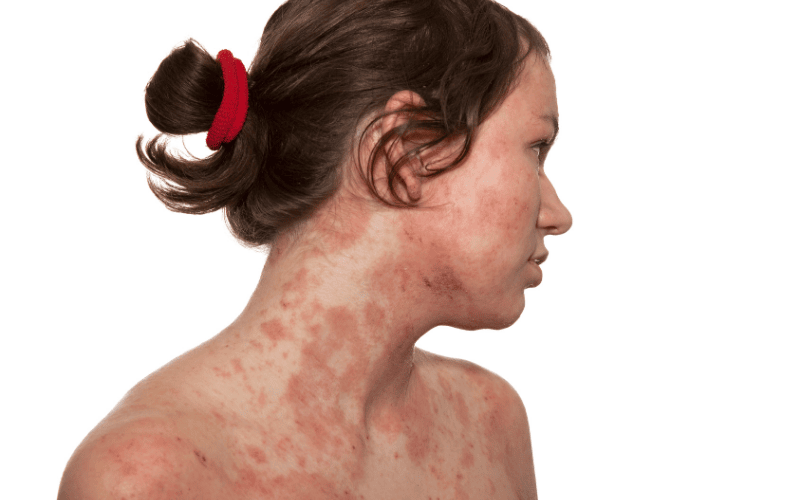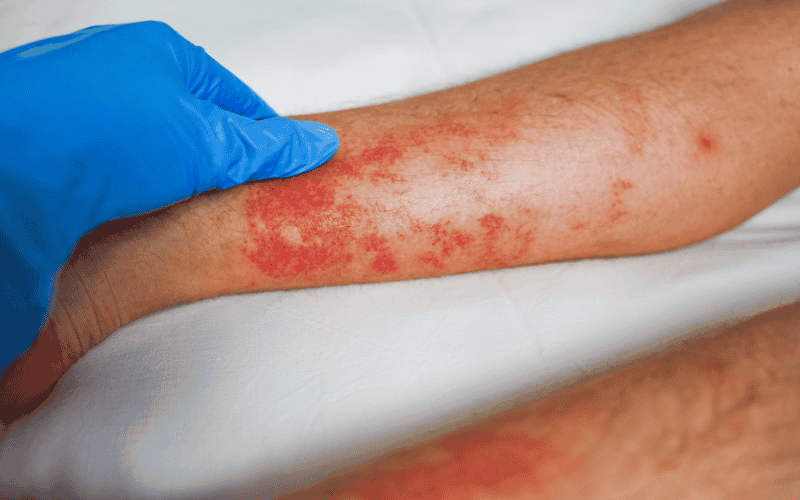ECZEMA TREATMENT


Say Goodbye to Dryness and Itching Today
Struggling with dry, itchy, or irritated skin? Our clinic provides advanced Best Eczema Treatment in Ahmedabad that addresses the root cause of your skin problems. Using safe, modern, and personalized techniques, we help soothe irritation, reduce flare-ups, and restore the skin’s natural health. Treatments are designed for both adults and children, ensuring comfort and effectiveness. With consistent care, you can enjoy softer, smoother, and healthier skin while preventing future episodes. Take the first step toward irritation-free skin and renewed confidence today.

What is Eczema?
Eczema is a chronic skin condition that leads to redness, inflammation, dryness, and severe itching. Without proper care, it can cause discomfort, disrupt sleep, and affect your confidence. The condition may flare up due to triggers like allergens, stress, or environmental factors, making daily life challenging. Our treatment plans are designed to soothe irritation, reduce flare-ups, and restore the skin’s natural barrier. By combining modern therapies with personalized care, eczema can be effectively managed, helping you enjoy healthier, smoother, and more comfortable skin. Early intervention and consistent care are key to long-lasting relief and improved skin health
- Identify triggers and prevent flare-ups
- Soothe irritated skin
- Improve overall skin health

Common Skin Concerns We Treat
Eczema can cause a variety of skin issues that affect comfort and confidence. We provide targeted treatments to manage irritation, inflammation, and dryness. Our solutions help restore smooth, healthy skin while preventing future flare-ups. Treatments are suitable for both adults and children, ensuring safe and effective care for everyone.
- Redness and inflammation
- Severe itching or irritation
- Dry, flaky, or rough patches
- Cracks, rashes, or fluid-filled blisters
- Thickened skin caused by repeated flare-ups

Our Advanced Eczema Treatments
Our clinic uses safe, effective, and modern treatments to manage eczema. Each treatment is tailored to your skin type and condition:
- Topical Medications: Reduce inflammation and calm irritation
- Moisturization Therapy: Restore hydration and strengthen the skin barrier
- Phototherapy (Light Therapy): For chronic or stubborn eczema
- Oral Medications: For severe or widespread cases
- Lifestyle & Skincare Guidance: Minimize triggers and prevent future flare-ups
Why Choose Dr. Krupa’s Clinic for Eczema Treatment in Ahmedabad
We are recognized for delivering reliable and effective eczema treatment in Ahmedabad. Our patient-friendly approach ensures comfort, safety, and visible results for every individual. Using modern treatment methods and a holistic approach, we focus on both managing symptoms and preventing future flare-ups. Treatments are customized to suit different skin types and lifestyles, making care safe and effective for both adults and children. With continuous follow-up and support, patients can maintain healthy, smooth, and irritation-free skin.

Experienced cosmatology and skin care specialists
Safe, painless, and advanced treatments
Personalized care for children and adults
Focus on both treatment and long-term prevention
Hundreds of satisfied patients
Book Your Consultation Today
Take the first step towards healthier, irritation-free skin. Contact our clinic today to schedule your best eczema treatment in Ahmedabad consultation. Don’t let eczema affect your daily life—get expert care now!
FAQ
Our clinic is known for advanced, safe, and effective eczema care.
While eczema cannot be permanently cured, proper treatment can manage symptoms and reduce flare-ups.
Treatment varies by severity, but most patients notice visible improvement within weeks.
Yes, treatments are child-friendly and safe for all ages.
Absolutely! Healthy skincare, diet, and avoiding triggers complement medical treatment and improve results.
Make An Appointment
Vastral
4th Floor, Rudra Business Park, 437, Rudra Complex, Metro Pillar No. 125, Vastral Metro Pillar 125, 437, Vastral Road, Mahadev Nagar Tekra, Ahmedabad, Gujarat 382418
Opening Hours
Monday-Sunday: 10am-08pm
Ellisbridge
Ground Floor, Sakar 2, Ellisbridge Shopping Centre, 17, near Police Station, Ellisbridge, Ahmedabad, Gujarat 380006
Opening Hours
Monday-Saturday: 04pm-08pm
Contact
Phone: +91 96628 50239
Email: drkrupaskinhairpcosclinic@gmail.com
Address: Ground Floor, Sakar 2, Ellisbridge Shopping Centre, 17, near Police Station, Ellisbridge, Ahmedabad, Gujarat 380006
Address: 4th Floor, Rudra Business Park, 437, Rudra Complex, Metro Pillar No. 125, Vastral Metro Pillar 125, 437, Vastral Road, Mahadev Nagar Tekra, Ahmedabad, Gujarat 382418
